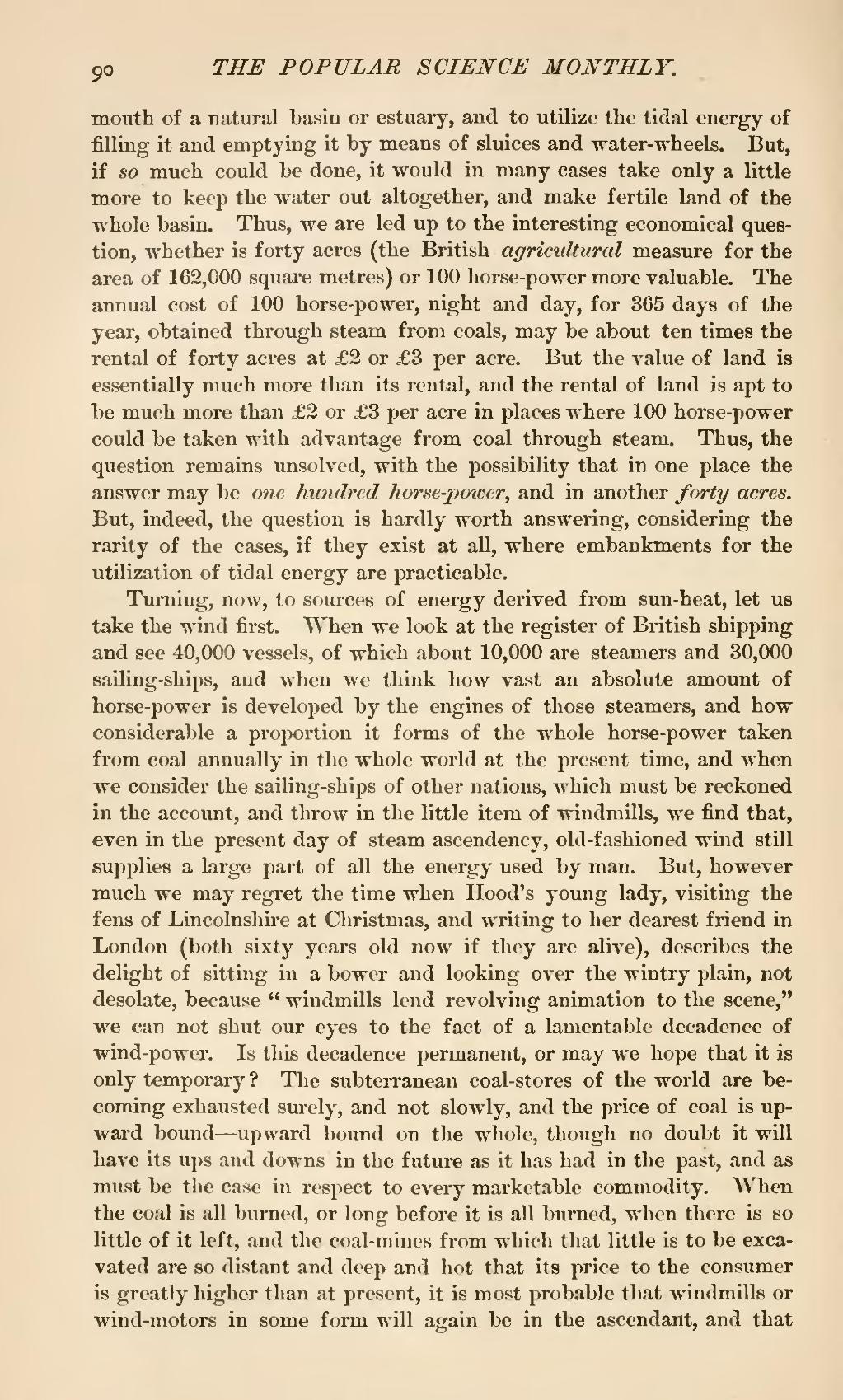mouth of a natural basin or estuary, and to utilize the tidal energy of filling it and emptying it by means of sluices and water-wheels. But, if so much could be done, it would in many cases take only a little more to keep the water out altogether, and make fertile land of the whole basin. Thus, we are led up to the interesting economical question, whether is forty acres (the British agricultural measure for the area of 162,000 square metres) or 100 horse-power more valuable. The annual cost of 100 horse-power, night and day, for 365 days of the year, obtained through steam from coals, may be about ten times the rental of forty acres at £2 or £3 per acre. But the value of land is essentially much more than its rental, and the rental of land is apt to be much more than £2 or £3 per acre in places where 100 horse-power could be taken with advantage from coal through steam. Thus, the question remains unsolved, with the possibility that in one place the answer may be one hundred horsepower, and in another forty acres. But, indeed, the question is hardly worth answering, considering the rarity of the cases, if they exist at all, where embankments for the utilization of tidal energy are practicable.
Turning, now, to sources of energy derived from sun-heat, let us take the wind first. When we look at the register of British shipping and see 40,000 vessels, of which about 10,000 are steamers and 30,000 sailing-ships, and when we think how vast an absolute amount of horse-power is developed by the engines of those steamers, and how considerable a proportion it forms of the whole horse-power taken from coal annually in the whole world at the present time, and when we consider the sailing-ships of other nations, which must be reckoned in the account, and throw in the little item of windmills, we find that, even in the present day of steam ascendency, old-fashioned wind still supplies a large part of all the energy used by man. But, however much we may regret the time when Hood's young lady, visiting the fens of Lincolnshire at Christmas, and writing to her dearest friend in London (both sixty years old now if they are alive), describes the delight of sitting in a bower and looking over the wintry plain, not desolate, because "windmills lend revolving animation to the scene," we can not shut our eyes to the fact of a lamentable decadence of wind-power. Is this decadence permanent, or may we hope that it is only temporary? The subterranean coal-stores of the world are becoming exhausted surely, and not slowly, and the price of coal is upward bound—upward bound on the whole, though no doubt it will have its ups and downs in the future as it has had in the past, and as must be the case in respect to every marketable commodity. When the coal is all burned, or long before it is all burned, when there is so little of it left, and the coal-mines from which that little is to be excavated are so distant and deep and hot that its price to the consumer is greatly higher than at present, it is most probable that windmills or wind-motors in some form will again be in the ascendant, and that
